
Cover: No. 20. Westminster, VI, 1977-78 oil on canvas


Cover: No. 20. Westminster, VI, 1977-78 oil on canvas
23 March – 2 May 2018
Monday - Friday 10 - 5.30 Saturday 11 - 2.00 Closed Easter Weekend
19 Cork Street London W1S 3LP
Tel: 020 7734 7984 Fax: 020 7851 6650 e-mail: art@browseanddarby.co.uk www.browseanddarby.co.uk
“Bill Coldstream’s life and self were such that when he painted out of them he painted for all of us, indeed for more than what he typified, the English at their very best.”
Ted Honderich Grote Professor Emeritus Philosophy of Mind and Logic University College LondonWilliam Coldstream was a complex, secretive, and eccentric painter, often at odds with his publicly charming and witty personality. His studio life was intensely private. Here he scrutinised and painted commanding portraits such as Walter Brandt and Lord Glenconner, and still-lifes like his three Orange Tree studies. Coldstream’s landscape pictures, in keeping with the rest of his works, were executed in a confined world, articulated from a secluded room, which often provided a high view-point. Later examples of these pieces were prospects of London
– The Chimney, Westminster Baths V and Westminster VI. Even his last studio, in the remote attic at 20 Church Row, Hampstead, was set high above the London skyline. He depicted nude studio models and portrait subjects with an uncompromising impersonal vision, as evidenced in Seated Nude and The Earl Jowitt. It did not matter to Coldstream if a portrait appeared unfinished to him or to a disappointed sitter, as Clark had mentioned to Anthony Eden when advising on his portrait commission for Christ Church, Oxford: “I mention the painter’s characteristics because I think half the battle for a successful portrait is the friendly relations between painter and sitter” *
Coldstream’s family were Scottish scientists, lawyers, and medical practitioners. However, his father, Dr. George Coldstream (as did Dr Jake Rake separately), gave his son the present on 12 August 1946 of a remarkable book called Art and Scientific Thought, by Martin Johnson, a volume now forgotten by art historians. This gift fundamentally changed Coldstream’s perception of painting and of himself as an artist. Johnson talks of communication and measurement in modern physical science, fantasy art (abstract art) and metaphysics. He discusses Leonardo da Vinci and his scientific, empirical mind, and the communication of careful measurement which resulted in carefully observed anatomical drawings - without “experience there can be no certainty and, perhaps, it is only our judgment which deceives, not experience”. Johnson talks of the physical world as an assemblage of an empirical, periodic pattern of tests and calculations that can be used by the artist and scientist alike. Coldstream repeatedly measured and recalibrated, with ruler and plumb line. As A.J. Ayer said of Coldstream, “you are the only logical positivist I know”. Observation was the touchstone of Coldstream’s practice, which enabled him to reconstruct visual experience by measuring the nature of our being through painting.
Coldstream’s accent of pictorial realism shifted as time progressed. In the 1920s, as a Slade art student, he engaged with different modes of expression, as in Street Musicians and Landscape, Ruckmans, whilst in the 1930s Coldstream’s
pictorial language developed in delicate, ultra-thin lines, as in Enid Canning and James B. Colquhoun. It was in this period that he discovered Walter Richard Sickert and toyed with abstraction. In 1934, he joined the G.P.O. Film Unit, where he remained until 1937, when he was able to return to painting through the patronage of Kenneth Clark. He then faced the challenges of debates around Realism and Surrealism, and co-founded the Euston Road School, which was committed to scrutinising realism. To this end, Coldstream travelled with Graham Bell to Bolton, where they painted factories and urban scenes. Throughout the 1940s Coldstream travelled and painted as a War Artist in North Africa and Italy, and in blitzed post-war London. By the 1950s he was engaged with the logic of picture-making and painting nudes through Adrian Stokes’s encouragement. By this point, Coldstream had been made a Professor at the Slade, a position that focused his mind on the nature of observational practice. It was the world of Blunt, Wittkower, Gombrich, A.J. Ayer, Wollheim, and Honderich, all of whom were grappling with the illusion, psychology and philosophy of art. For Coldstream this meant the exploration of picture-making in terms of measurement, calculation, time, space, mapping, and perspective. Yet, paradoxically and typically, Coldstream would be sceptical about any assertions concerning his pictures. Having been significantly involved in most major British cultural institutions since the war, Coldstream was made a CBE in 1952, and a Knight Bachelor four years later. His ‘Coldstream Reports’, in 1960 and 1970, fundamentally changed art education. However the theories that underpinned his own artistic practice preoccupied Coldstream throughout the 1960s, 70s and 80s, although in the last decade his canvases took on another dimension of solidity, leaving less traces of his drawing, and becoming far tighter and more condensed, as can be seen in Orange Tree II or Reclining Nude II.
We are extremely grateful to the private collectors and institutions who have generously loaned their paintings to the exhibition.
Peter T J Rumley Kenneth Clark to Anthony Eden 8 May 1960. Permission to quote courtesy of Jane Clark, Saltwood Castle Archive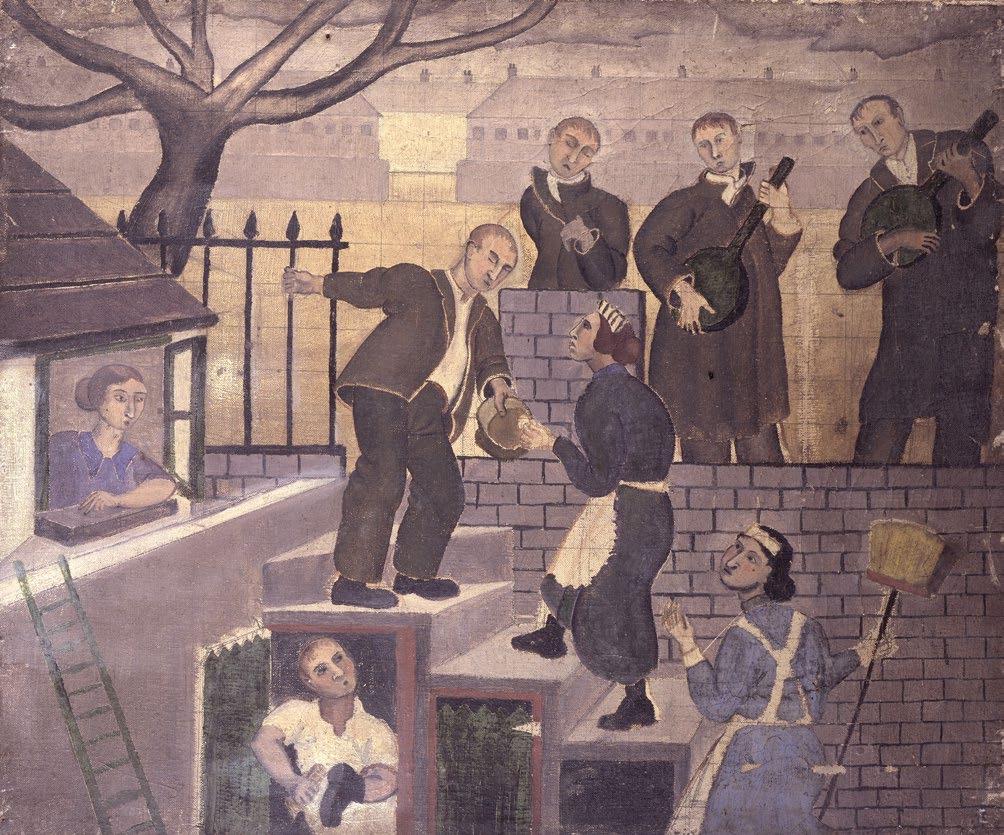
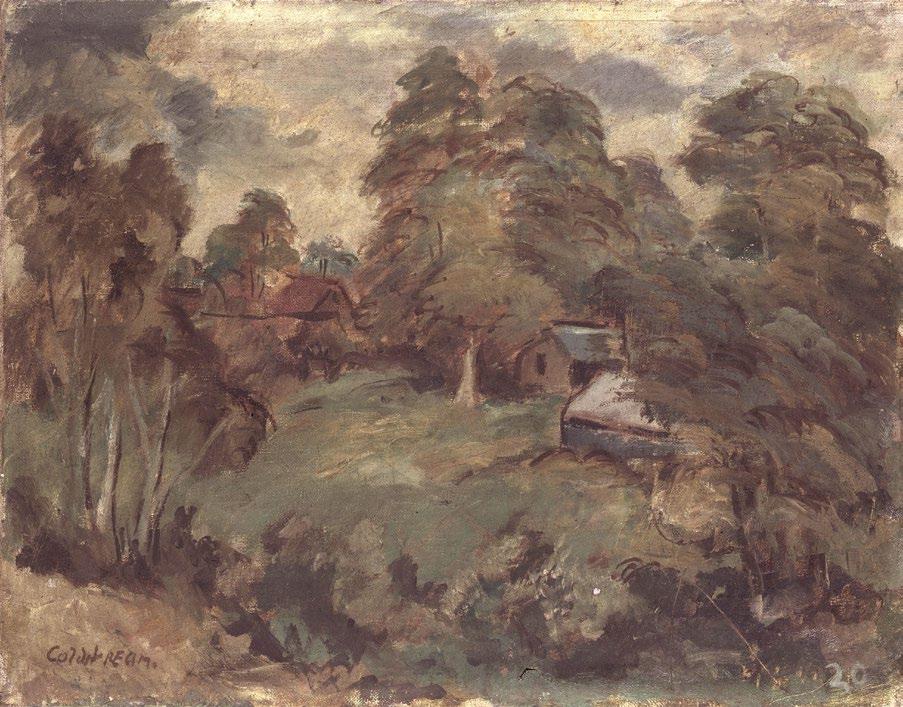



6.


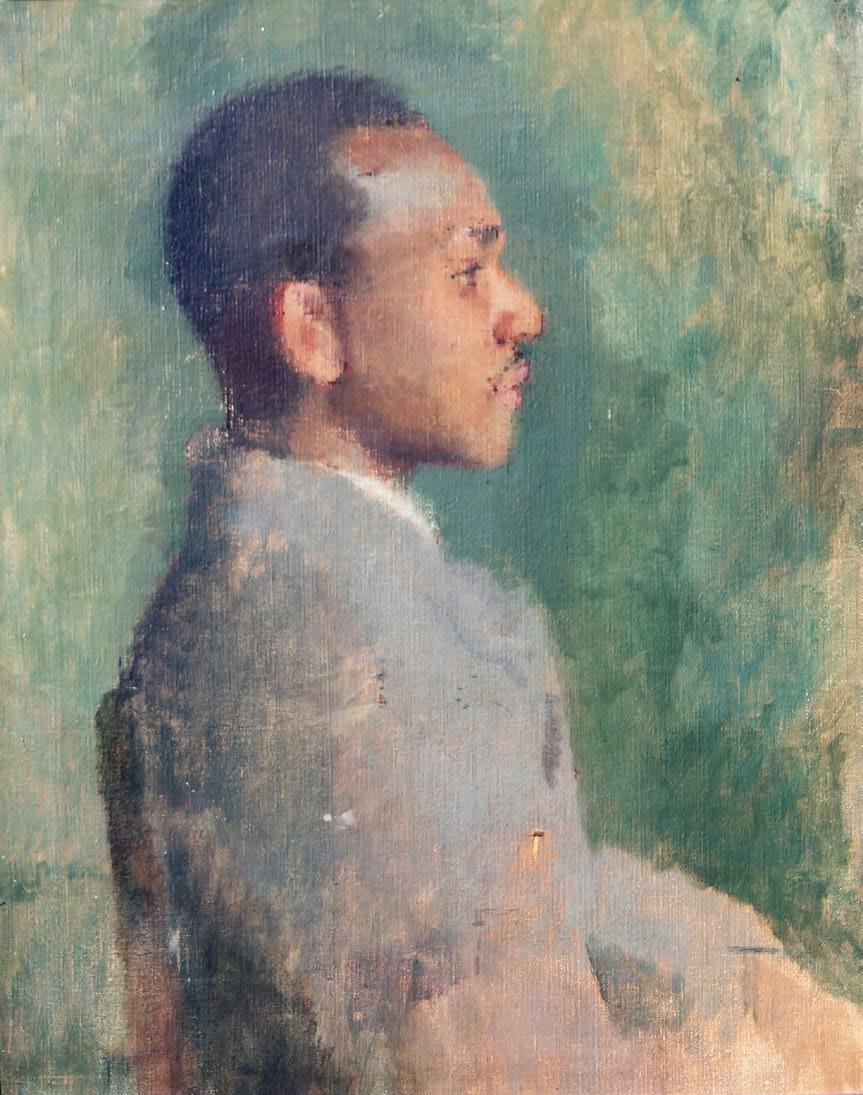
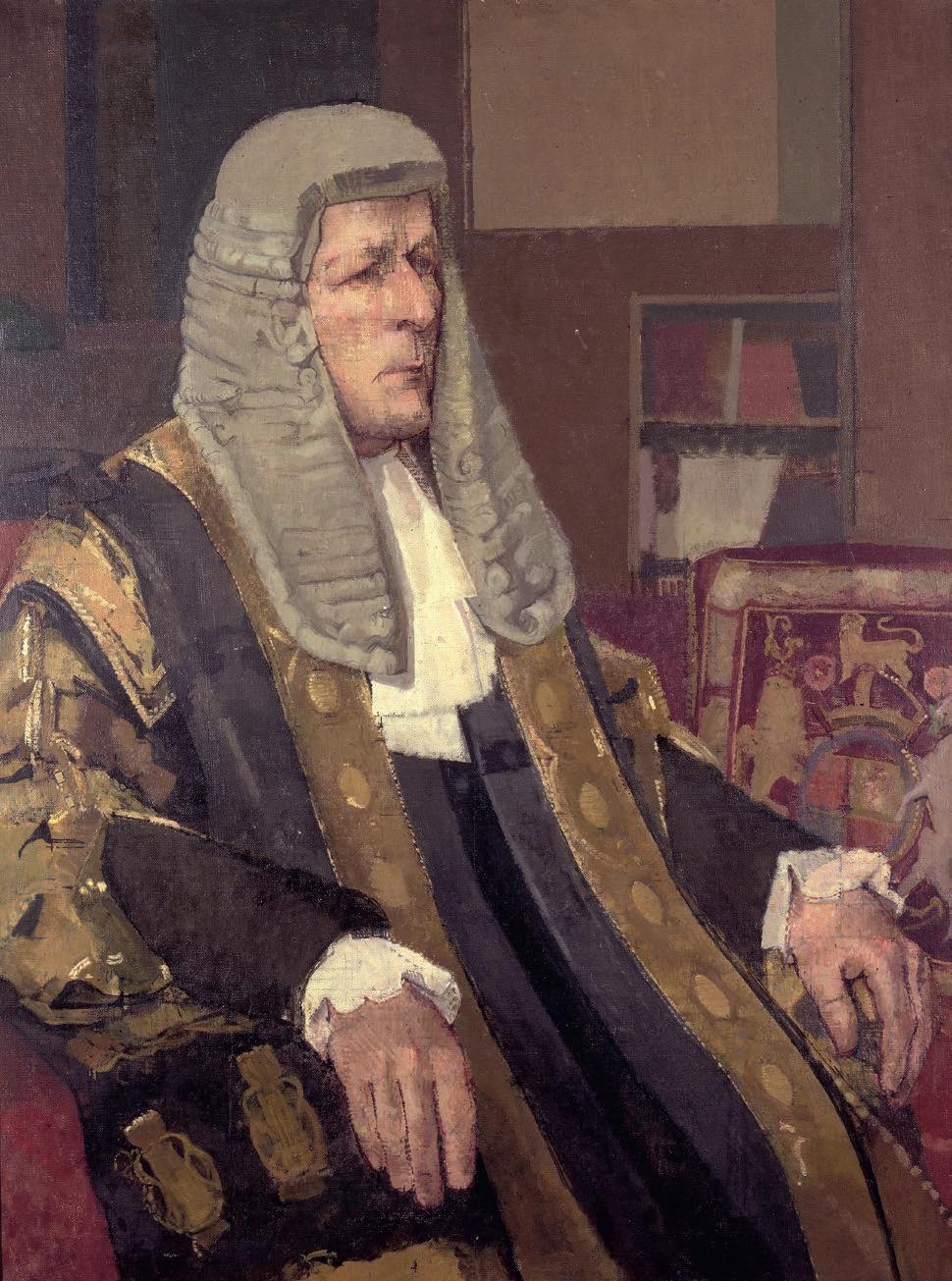

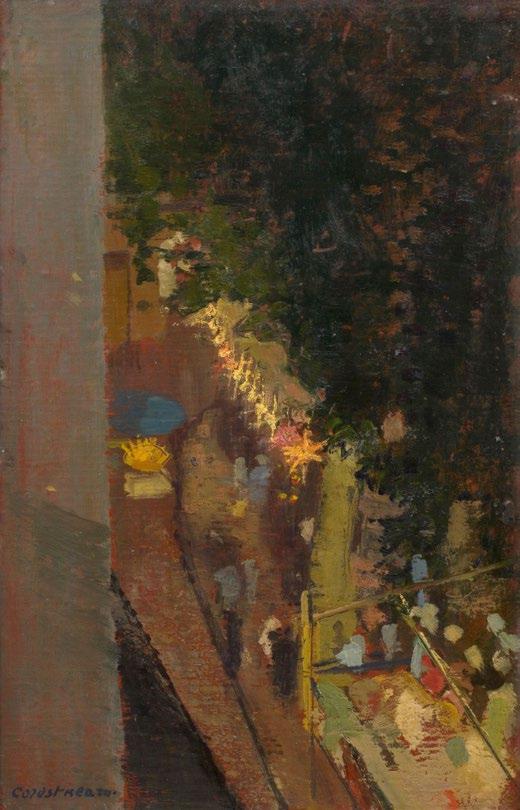



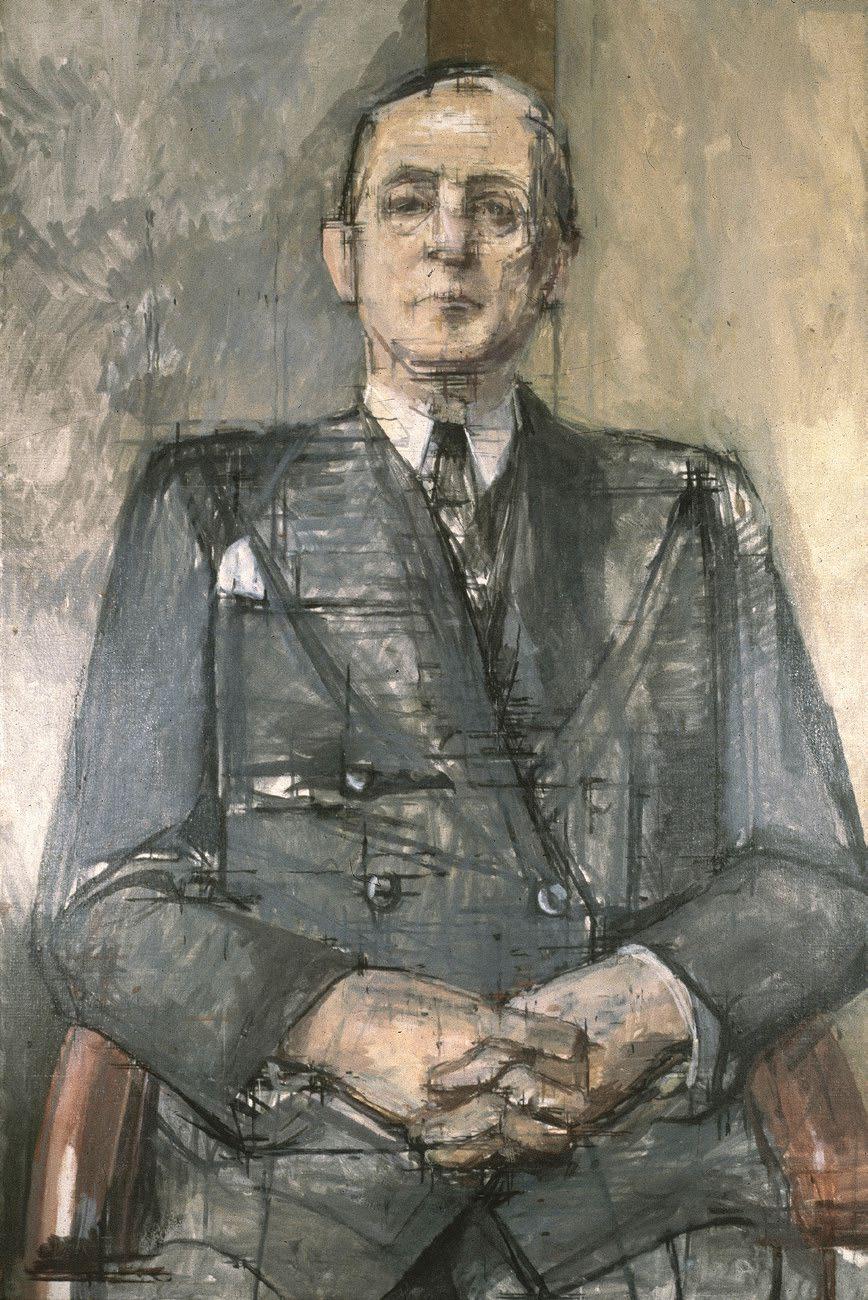
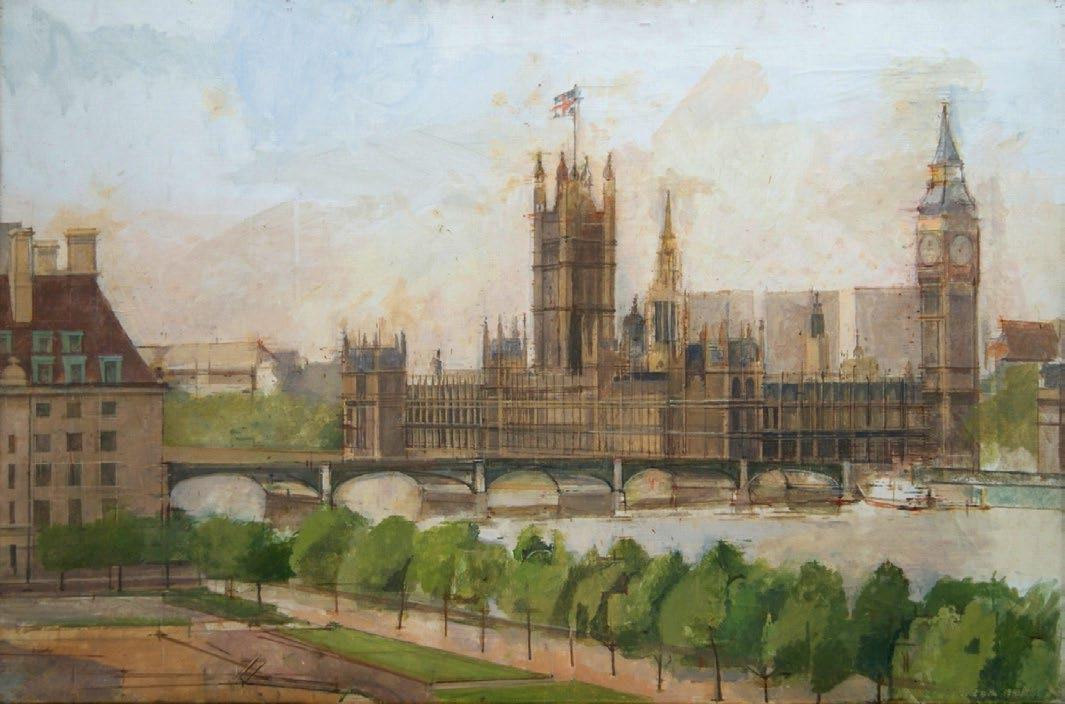
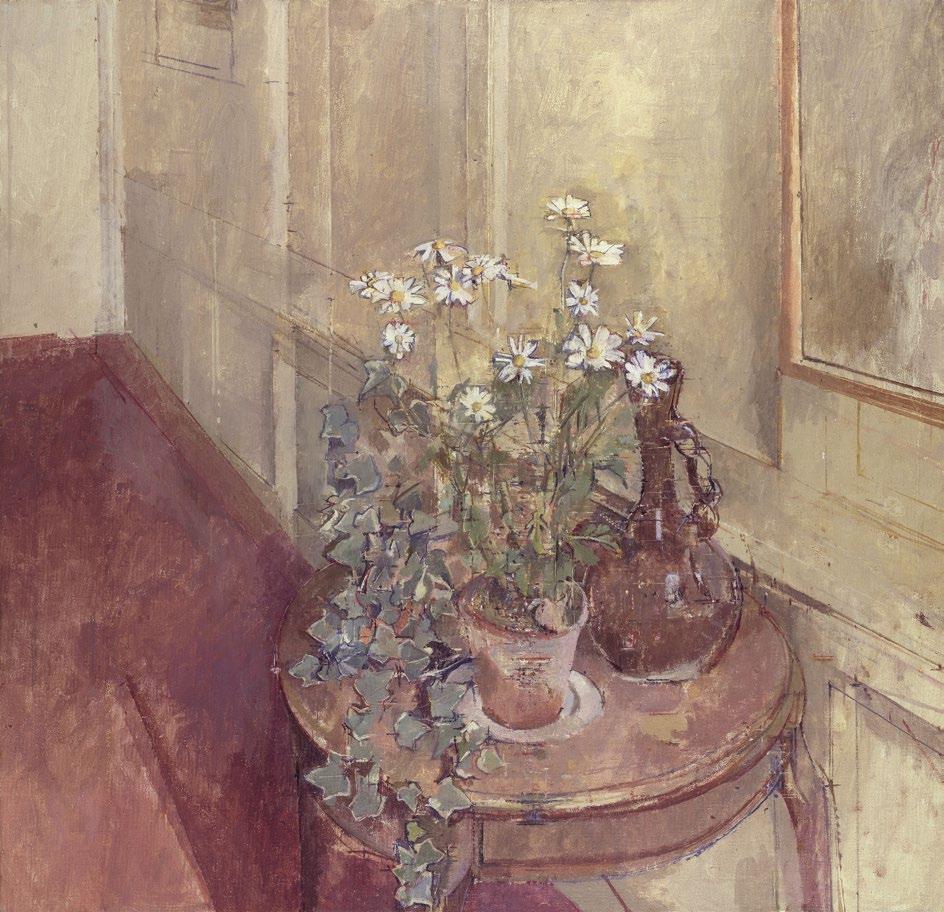



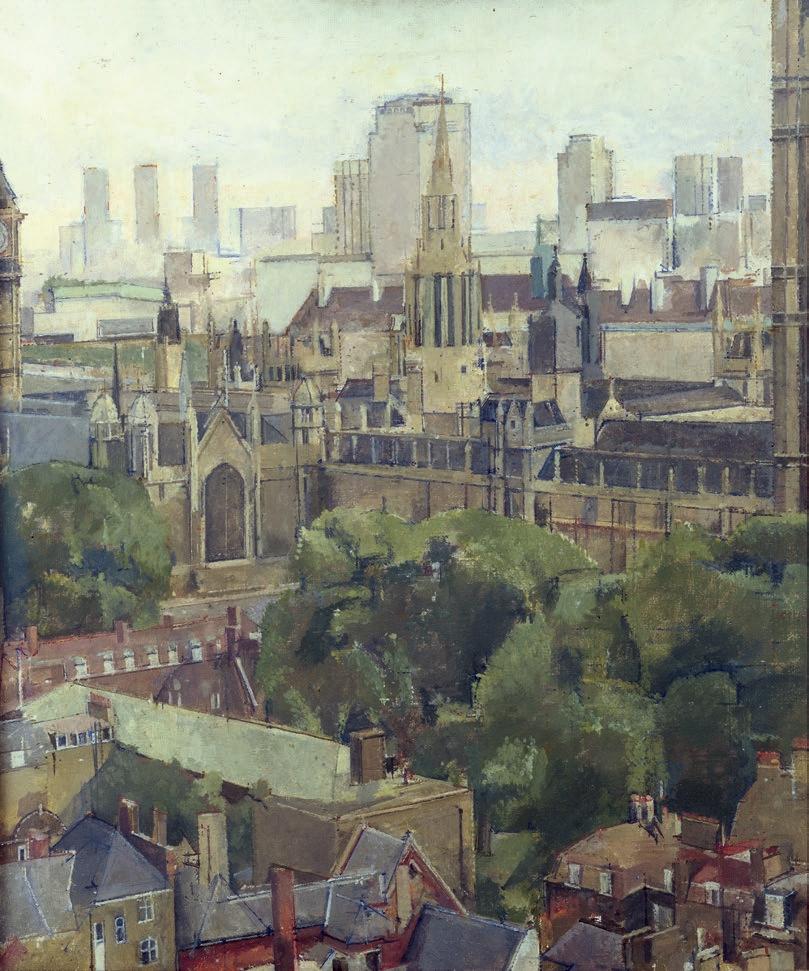



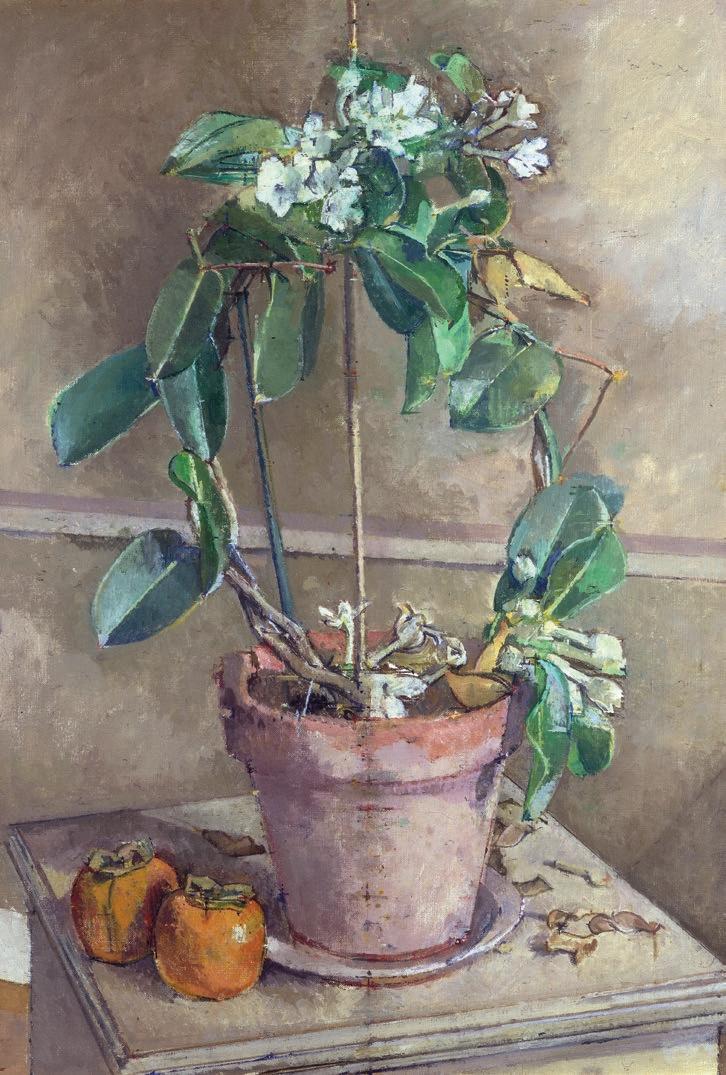


1. Street Musicians, 1926 oil on canvas inscribed ‘1926 Nov.’ in black, and ‘Coldstream’, in blue paint on reverse of canvas. 20 x 24 inches
Provenance Private Collection, UK.
2. Landscape, Ruckmans, 1928 oil on canvas inscribed ‘Coldstream’, bottom left. ‘20’, bottom right, which refers to Slade Sketch Club number 14 x 18 inches
Provenance
Mrs Naomi Durrell; Sotheby’s, London, 4 March 1987, Lot 293 as Houses through Trees at Ruckmans, Sussex; Private Collection, UK.
3. Mrs. Enid Canning, 1938 oil on canvas 36 x 28 inches
Provenance Hanford School, Dorset.
4. James B. Colqhoun, c. 1939 oil on canvas 35 1/2 x 27 1/2 inches
Provenance Margaret Colquhoun; Enid Canning; Sarah Canning; Duke’s of Dorchester auction, Lot 441; private treaty sale, September 2015; Private Collection, UK.
5. Shenington Church, 1942 oil on canvas 12 x 10 inches
Provenance
Dr. John Rake; Private Collection, UK.
6. Landscape with Two Pyramids, I, 1944 oil on canvas
inscribed ‘7 6/10, 3 1/2 + 3/10’, in pencil, bottom right. 6 3/4 x 9 3/4 inches
Provenance Private Collection, UK.
7. Ponte Vecchio, Florence, 1945 oil on canvas
27 1/2 x 35 inches
Provenance
Rev. and Mrs C.B. Canning; Sarah Canning; Sotheby’s sale, 20th Century British Art, 11 December 2006, Lot 55, 2007, Offer Waterman & Co., Modern British Art catalogue, pp. 6–7, illustrated, colour, p. 7; Private Collection, UK.
8. Jamaican Airman, 1945 oil on canvas
inscribed on reverse – ‘A/C I REID W Coldstream’ on canvas. Two name labels on frame. 19 x 15 inches
Provenance
Mrs Valla Buxton; Private Collection, UK.
9. The Earl Jowitt, 1945-51 oil on canvas 40 x 30 inches
Provenance
Middle Temple, The Earl Jowitt; Countess Jowitt; Private Collection, UK.
10. St Trophime, Arles, II, 1947 oil on cardboard
inscribed ‘St. Trophime, Arles, early morning view from Room 28, Hotel Du Forum, William Coldstream July 1947’, on the reverse in pencil. Also, ‘William Coldstream’, in black ink, centre left. 8 x 13 inches
Provenance
Jennifer Hart; Private Collection, UK.
11. Quatorze Juillet, Arles, IV, 1947 oil on board
inscribed ‘Coldstream’, bottom left. On reverse: ‘Arles, QUATORZE JUILLET, ARLES.1947. From room 28 Hotel du Forum, ARLES. BY WILLIAM COLDSTREAM. PROPERTY OF MICHAEL DIACK, 95 MARLBOROUGH MANSIONS LONDON NW6’, in ink on paper and stuck to the board with sellotape; in pencil, ‘133/8 x 8’. 13 x 8 inches
Provenance
Michael Diack; Anthony d’Offay; Private Collection, UK.
12. Mrs. Middleton’s House from Oriel Cottage, Shenington, 1961 oil on paper cloth 20 x 18 inches
Provenance Private Collection, UK.
13. Seated Nude [Monica Hoyer], 1959-60 oil on canvas 42 x 28 inches
Provenance
Adrian Stokes; Ann Stokes; Private Collection, UK.
14. Lord Glenconner, 1961-2 oil on canvas 44 x 33 inches
Provenance Northern Assurance Company; Private Collection, UK.
15. Walter Brandt, 1962-3 oil on canvas 36 x 24 inches
Provenance
Walter Brandt; Peter Brandt; Sotheby’s sale, 20th Century British Art, 8 October 2008, Lot 32, Private Collection, USA.
16. The Houses of Parliament from The Festival Hall, 1972-3 oil on canvas 23 3/4 x 35 3/4 inches
Provenance Private Collection, UK.
17. Still Life with Daisies, 1974 oil on canvas 29 x 30 inches
Provenance
Anthony d’Offay; Ann Stokes; Private Collection, UK.
18. Garden in Falmouth, 1977 oil on canvas
18 x 13 3/4 inches
Provenance
Anthony d’Offay; Private Collection, UK.
19. Girl With Plants [Anna Bennett, I], 1975-6 oil on canvas 20 x 24 inches
Provenance
Anthony d’Offay; Private Collection, UK.
20. Reclining Nude, II [Catherine Kessler], 1977-8 oil on canvas 20 x 24 inches
Provenance
Anthony d’Offay; Private Collection, UK.
21. Westminster, VI, 1977-78 oil on canvas
29 4/5 x 24 4/5 inches
Provenance
Anthony d’Offay; HSBC Holdings plc.
22. Falmouth, 1978 oil on canvas 12 x 16 inches
Provenance
Anthony d’Offay; Private Collection; Christie’s sale, Postwar & Contemporary British Painting & Watercolours, 8 March 1991, Lot 117, Private Collection, UK.
23. Greenbank Hotel, Falmouth, 1979 oil on canvas 10 x 12 inches
Provenance
Anthony d’Offay; Private Collection, UK.
24. Double Portrait [Ian Angus and Ann Stokes-Angus], 1979-80 oil on canvas 22 x 27 inches
Provenance Private Collection, UK.
25. Stephanotis and Persimmons, 1979 oil on canvas 28 x 20 inches
Provenance
Anthony d’Offay; Private Collection, UK.
26. Artist and Model [Belinda Brown], 1983-4 oil on canvas 44 x 30 inches
Provenance Private Collection, UK.
27. Daisies, II, 1980 oil on canvas
23 3/4 x 19 3/4 inches
Provenance
Anthony d’Offay; Private Collection, UK.
1908 Born on 28 February in Belford
1926-9 Attended Slade School of Fine Art
1931 Joined the London Artists’ Association. Met and married Nancy Sharp
1933 Joined the London Group (first showed with them in 1929)
1934-7 Joined the GPO Film Unit to make films under John Grierson
1937 Returned to painting full-time. Co-founded the Euston Road School with Victor Pasmore and Claude Rogers
1938 Participated in Mass Observation’s painting trip to Bolton, with Graham Bell
1940 Enlisted in the Royal Artillery
1941-3 Camouflage Officer for West Midlands
1943 Appointed Official Portrait Painter, Middle East by the War Artists’ Advisory Committee. Travelled to Egypt
1944-5 Travelled to Italy
1945 Taught evening classes at Camberwell School of Arts and Crafts
1948 Became Head of Painting at Camberwell School of Arts and Crafts
1948-63 Trustee of the National Gallery
1949 Joined boards of the Tate Gallery (until 1963) and Whitechapel Gallery
1949-75 Returned to the Slade School as Principal and Professor of Fine Art
1952 Awarded a CBE
1953 Elected a Fellow of University College London
1953-62 Chaired Art Panel of the Arts Council of Great Britain
1956 Made a Knight Bachelor; trustee of the Tate Gallery, and Liaison Trustee to the National Gallery
1957-62 Joined board of directors of the Royal Opera House
1958-71 Chairman of the National Advisory Council on Art Education
1960 First ‘Coldstream Report’ published.
1961 Married Monica Hoyer
1962 First major retrospective at the South London Art Gallery (touring)
1962-70 Vice Chairman of the Arts Council of Great Britain 1964-71 Chairman of the British Film Institute
1970 Second ‘Coldstream Report’ published
1978 Awarded the Sir Misha Black Medal. Added to the College of Medallists
1987 Died 18 February, London
Arts Council Collection
The Ashmolean Museum of Art & Archaeology
Birmingham Museum & Art Gallery
Blackburn Museum & Art Gallery
Bodleian Libraries, Oxford
Bristol Museum & Art Gallery, Bristol
British Council Collection
Government Art Collection
Graves Gallery, Sheffield
Imperial War Museums
Pallant House Gallery, Chichester
The Potteries Museum and Art Gallery, Stoke-on-Trent
National Gallery of Canada, Ottawa
The National Library of Wales, Cardiff
National Museum of Wales, Cardiff
Southampton City Art Gallery
Tate Collection
UCL Art Museum, London University Art Gallery, Hull
Welsh Arts Council
Yale Center for British Art, New Haven